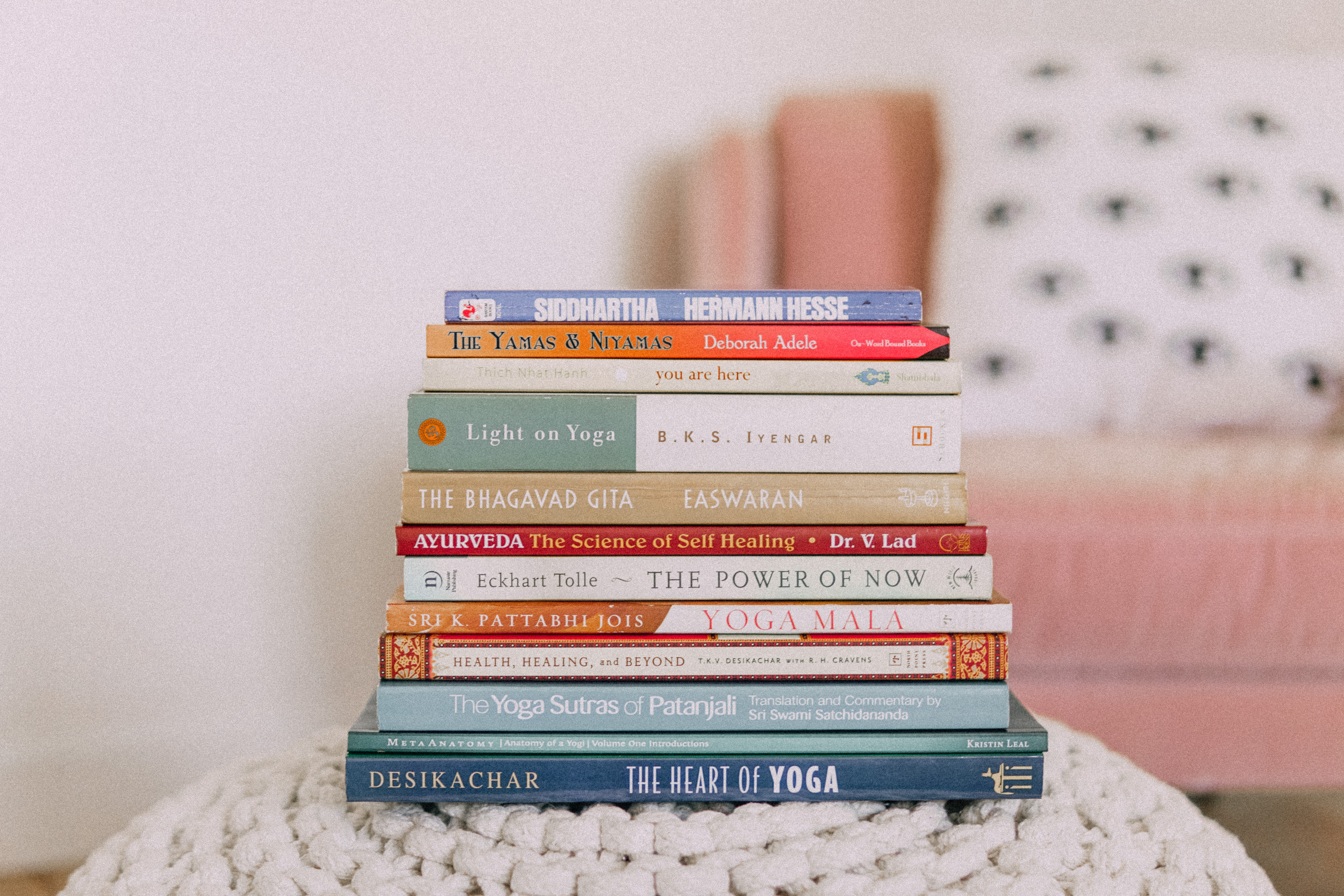MENU
Filed Under:

February 27, 2021
UP NEXT >>>
Yamas
Today we are taking a deep dive into the Yamas, which is the first of the 8 Limbs of Yoga as outlined in The Yoga Sutras of Patanjali. If you missed my other blog posts The Yamas & Nimyamas and the Niyamas, go back and read them first!
Its is said that the 8 Limbs of Yoga are in order of importance, but I truly believe the Yamas and Niyamas are quite interchangeable and can all be applied to both how we relate to others and ourselves. I felt it relevant to speak on the Niyamas first as they traditionally refer to how we relate to ourselves, and February for me was all about self-love and relationship to Self; but the reality is that we are all connected, we are all one. So while the Yamas is traditionally about how we relate to others, the way we relate to and treat others ultimately effects us too.
As mentioned in my post on The Yamas & Nimyamas, there are 5 Yamas:
- Ahimsa
- Satya
- Asteya
- Brahmacharya
- Aparigraha
First, we have Ahimsa or Non-violence.
Ahimsa on a very obvious level is about not physically harming anything. Not people, animals, our environment, our world, and even ourselves. It is about ensuring we are doing everything through love and compassion; but it is also about being non-violent with our thoughts and our words.
Real-world applications:
- Rework negative thoughts to be positive ones. Find the silver lining, because there is 100% always one, and focus on that thought instead.
- Be mindful of what you eat! Whether this is going one hundred plant-based or only doing Meatless Mondays, check that what you are consuming was handled in a non-violent way.
- Question your carbon footprint. The possibilities are beautifully endless to reduce it. Maybe you shift from using plastic bags to reusable silicon bags like these, or bring a reusable coffee cup when you go out for coffee – PS: this is my personal fav!
Next up, we have Satya or Truthfulness.
Satya is beautiful because it reminds us to be truthful to friends and family but also ourselves. It requires us to think, is what I am telling the truth? Whether we are saying these things out loud or expressing them in our head.
Often, we are so wrapped up in keeping an image. Yet, only when we are truthful to who we really are does life start to unfold as it is meant to. Because remember… you are the only you there ever has been and ever will be. So, your uniqueness is here for a purpose. Let that truth shine, bb!
Real-world applications:
- Meditation! When we get quiet, we can finally hear our truths and break through the mental clutter.
- How you show up on social media. Are you guilty of posting the highlight reel? Show some of the rough moments too, keep it honest!
The third is Asteya or Non-stealing.
Asteya refers to both material and non-material things. Either way, it is thought to arise from the thoughts and fluctuations of the mind – specifically the scarcity mindset or a lack mentality. The ego rooted thoughts that tell us, ‘I’m not good enough’ or ‘I don’t have enough.’
But you know where these kinds of thought patterns often come from? COMPARISON. And you what comparison does? Steals our joy. The ultimate goal with Asteya is to feel contentment within yourself, so you don’t feel the need to take from others in ANY way: their lives, their skill sets, their money, their time. Say it with me, “I have everything I need.”
Real-world applications:
- Set boundaries and respect boundaries: set boundaries around your time and energy! And at the same time, be mindful around other peoples boundaries- before you vent to a friend make sure they are freely willing and in a place where they feel available to hold space for you!
- Do comparison checks. When you compare yourself to another person, see what you like in them and TELL THEM instead of being envious.
- Practice being in the present. This allows us to be content with who we are, where we are, and what we have – right now.
Then comes Brahmacharya or Celibacy.
Think of Brahmacharya as moderating your sensory pleasures. So yes, it could mean the traditional form of celibacy we all know, but really, it is about applying this mindset to what we do beyond just sex. It is about ensuring we are disciplined, intentional and mindful about where our energy is going.
The goal here is to ensure we are using our time and energy in a mindful and intentional way! To question the impulses we may have and verify they are worth it before we mindlessly indulge. This helps us grasp control of our desires instead of the other way around.
Real-world applications:
- Monitor time spent on screens or just scrolling. If you’re an iPhone user, there is literally a feature built-in to your phone to make this easy!
- Do a sugar or caffeine detox just to see how dependent you are. We got to keep those addictions in check.
- Do an inventory of how you spend and share your energy: Check in with yourself about where you’re spending your energy – is it aligned with your highest good and your deepest desires?
And last but not least, Aparigraha or Non-greed/Non-Grasping.
Aparigraha can inspire us all to live more minimally and in a state of non-attachment. In regards to living more minimally or consuming in a mindful way it challenges us to ask Marie Kondo’s famous question, “does this bring me joy?”. If it doesn’t, you need to let it go. It is stealing your energy and space – both of which are limited. The key here is to make sure we are not holding onto things that are hindering us. The jeans that no longer fit. The donation pile that is living in our trunk. The memories we hold onto so often in material things. Aparigraha reminds us we don’t have space for new if we can’t let go of the old. Aparigraha in regards to non-attachment invites us to recognize the impermanence of everything. Attachment is often related to suffering because the reality is that everything is impermanent, everything is in a constant state of change and when we resist change and try to attach to something that’s temporary we create suffering for ourselves. Something else to consider in regards to non-greed is that greed is about getting, taking, hoarding for ourselves, which creates a divide between us and the rest of the world, which cultivates more selfish-ness, and isolation.. which is just low vibe energy. When you shift your perspective to see yourself in all beings and all things, you understand that by giving and sharing with others, you are giving and sharing with yourself, because we are all one.
Real-world applications:
- Clean out your closet. Pull everything out and ask yourself how long it’s been since you wore it. If it hasn’t been since pre-covid, does it still serve you? Perhaps someone else could use it instead?
- Notice your expectations and attachments in regards to the way things play out in your life. For example: expecting and attaching to your yoga practice being exactly the same as it was yesterday which perhaps leaves you feeling frustrated, which is sort of a greedy approach! Instead, can you shift away from greed and expectation and simply be grateful for what is today in this moment?
If you’re feeling called to learn more about the Yamas and Niyamas I highly recommend reading The Yamas and Niyamas by Deborah Adele – it’s a great read and goes into a lot more detail in a really digestible way! Also, make sure to tune into Tuesday’s episode of The Yoga Inspired Life Podcast as I’ll be diving into the Yamas and Niyamas on the podcast in a solo episode in more depth as well!



Comments Link